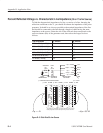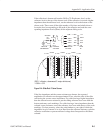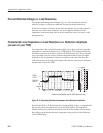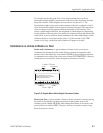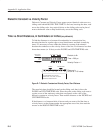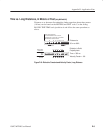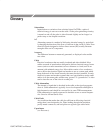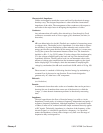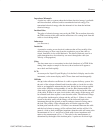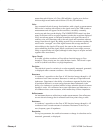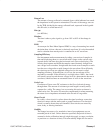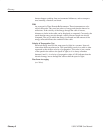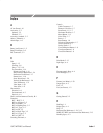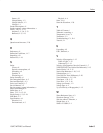
Glossary
Glossary–2
1502C MTDR User Manual
Characteristic Impedance
Cables are designed to match the source and load for the electrical energy
that they carry. The designed impedance is often called the characteristic
impedance of the cable. The arrangement of the conductors with respect to
each other is the major factor in designing the impedance of cables.
Conductor
Any substance that will readily allow electricity to flow through it. Good
conductors are metals such as silver, copper, gold, aluminum, and zinc (in
that order).
dB
dB is an abbreviation for decibel. Decibels are a method of expressing power
or voltage ratios. The decibel scale is logarithmic. It is often used to express
the efficiency of power distribution systems when the ratio consists of the
energy put into the system divided by the energy delivered (or is some cases,
lost) by the system. Our instrument measures return loss. The formula for
decibels is: dB = 2– log (Vi/Vl) where Vi is the voltage of the incident pulse,
Vl is the voltage reflected back by the load, and log is the decimal-based
logarithmic function. The dB vertical scale on our instrument refers to the
amount of voltage gain (amplification) the instrument applies to the signal
before displaying it. For example, when the instrument is amplifying the
voltage by one hundred, the dB scale would read 40 dB, which is 20 log 100.
DC
Direct current is a method of delivering electrical energy by maintaining a
constant flow of electrons in one direction. Even circuits designed to
generate only AC often have a DC component.
Dielectric
(see Insulation)
Domain
A mathematical term that refers to the set of numbers that can be put into a
function (the set of numbers that comes out of the function is called the
“range”). A time-domain instrument performs its function by measuring
time.
Impedance
The total opposition to the flow of electrical energy is a cable or circuit.
Impedance is made partly of resistance (frequency independent) and partly of
reactance (frequency dependent). Although impedance is expressed in units
of Ohms, it must not be confused with the simple resistance that only applies
to DC signals. Technically, impedance is a function of the frequency of the
electrical signal, so it should be specified at a frequency. As a practical
matter, the impedance of most cables changes very little over the range of
frequencies they are designed for.



